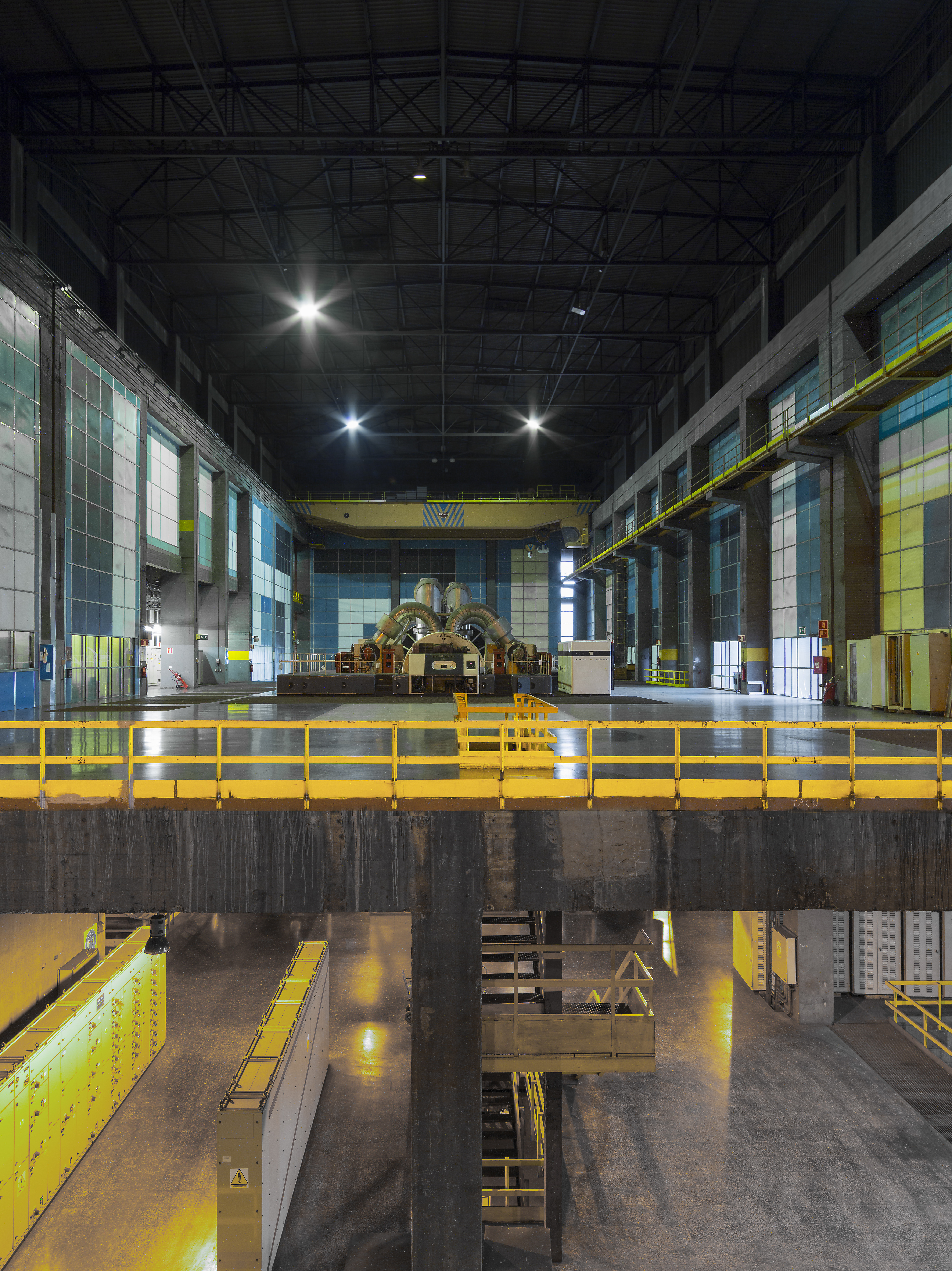
Fundación EDP sponsors an exhibition about Vaquero Palacios

The ICO Museum, in Madrid, will host an exhibition on the artistic work of Joaquín Vaquero Palacios in the Asturian power plants of Salime, Miranda, Proaza, Aboño and Tanes
On February 15, the exhibition ‘Joaquín Vaquero Palacios. La belleza de lo descomunal. Asturias, 1954-1980’ opens at the Museo ICO de Madrid. Curated by Joaquín Vaquero Ibáñez and organized by the Fundación ICO, the exhibition is sponsored by Fundación EDP. It will be open to the public until May 6 from 11:00 a.m. to 8:00 p.m. from Tuesday to Saturday and from 10:00 p.m. to 2:00 p.m. on Sundays. Admission is free.

Joaquín Vaquero Palacios (Oviedo, 1900-Madrid, 1998) architect, painter and sculptor, was a total creator who approached the creative process globally. This exhibition focuses on the project that, as a result of thirty years of collaboration with Hidroeléctrica del Cantábrico (now EDP), materialized in five Asturian electric power generation plants, conceived as total works of art.

The exhibition allows to discover the artistic work realized by Vaquero Palacios in the power plants of Salime (1945-1955) - one of the best examples of Spanish industrial architecture ascribed to the Modern Movement - Miranda (1956-62), Proaza (1964-68) ), Aboño (1969-1980) and Tanes (1980).
Murals, sculptures, furniture, industrial design - alone or with the collaboration of his son, Joaquín Vaquero Turcios, also an architect and artist - and even architecture, make Vaquero Palacios a versatile artist who was able to transform the enormous structures of these centers in authentic industrial cathedrals of the twentieth century.

The exhibition
The exhibition that the ICO Museum presents has as its fundamental objective to bring to light and discover one of the most outstanding (and at the same time, most unknown) industrial heritages of the Spanish contemporary panorama.
The ICO Museum is the only one in Spain dedicated exclusively to architecture, a discipline that covers the three exhibitions held each year.
The tour begins with an introduction about character and its environment, from a life, familiar and creative point of view, as well as geographical, through maps that locate within the Asturian scope each one of the centrals, to which they dedicate individual chapters.
90 photographs by Luis Asín and extensive audiovisual work by Juan Vaquero, both made especially for this project, along with paintings by Vaquero Palacios, vintage photographs, original plans, sketches, models, books and various elements of industrial design, among other works, make up this exhibition that aims to narrate a very specific stage in the extensive production of Joaquín Vaquero Palacios, corresponding to the period between 1954 and 1980, years in which its close collaboration with Hidroeléctrica del Cantábrico, today EDP, was developed.
For Joaquín Vaquero Ibáñez, curator and grandson of the artist, the scale has been one of the main challenges of the exhibition: "We speak of dams built by millions of tons of concrete that make up huge and gigantic interiors; jumps of water excavated in mountains of rock acceded through infinite tunnels; turbine rooms where several regular line planes could coexist ... The dimensions of these spaces are beyond our daily perception ".
About Joaquín Vaquero Palacios
Joaquín Vaquero Palacios (1900-1998) was an architect, painter and sculptor. His father, Narciso Hernández Vaquero (1866-1964), was director and president of Hidroeléctrica del Cantábrico for almost half a century, and responsible for the La Navia plant and the first advances in the energy supply of the city of Oviedo. During this process, Joaquín, very young then, accompanied him on his trips by train, car and mule, soaking up the Asturian landscape, its light, color and scale.
Vaquero Palacios studied architecture in Madrid and combined, brilliantly, the pictorial and architectural activity with an insatiable hunger of knowledge and experience from his innumerable trips.
Years later, the heads of Hidroeléctrica del Cantábrico commissioned the works of artistic integration of the dam of Grandas de Salime (made between 1954 and 1960), the first of a series of projects carried out in Spain with the character of "total opus", combining engineering, architecture, painting, design and a perfect scenery to create a unique and singular work of pharaonic dimensions. Salime will be followed by the work carried out at the Miranda plants, Proaza (where he undertook the overall development of the project, including architecture), Aboño and Tanes.
The exhibition is completed with the publication of a catalog that documents in depth the work carried out by Vaquero Palacios in these five Asturian power plants, a book that, like all those published by the ICO Museum, wants to become an inescapable reference on this subject, contributing decisively to the work of dissemination of Spanish architecture carried out from this institution.
Published in Spanish and English, and illustrated with the photographic work of Luis Asín, the book features articles by Rafael Moneo, Juan Navarro Baldeweg, Iñaki Ábalos, Francisco Egaña, Natalia Tielve and Joaquín Vaquero Ibáñez.